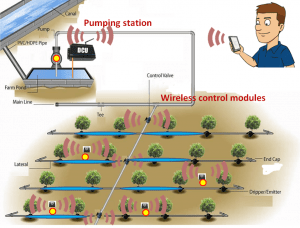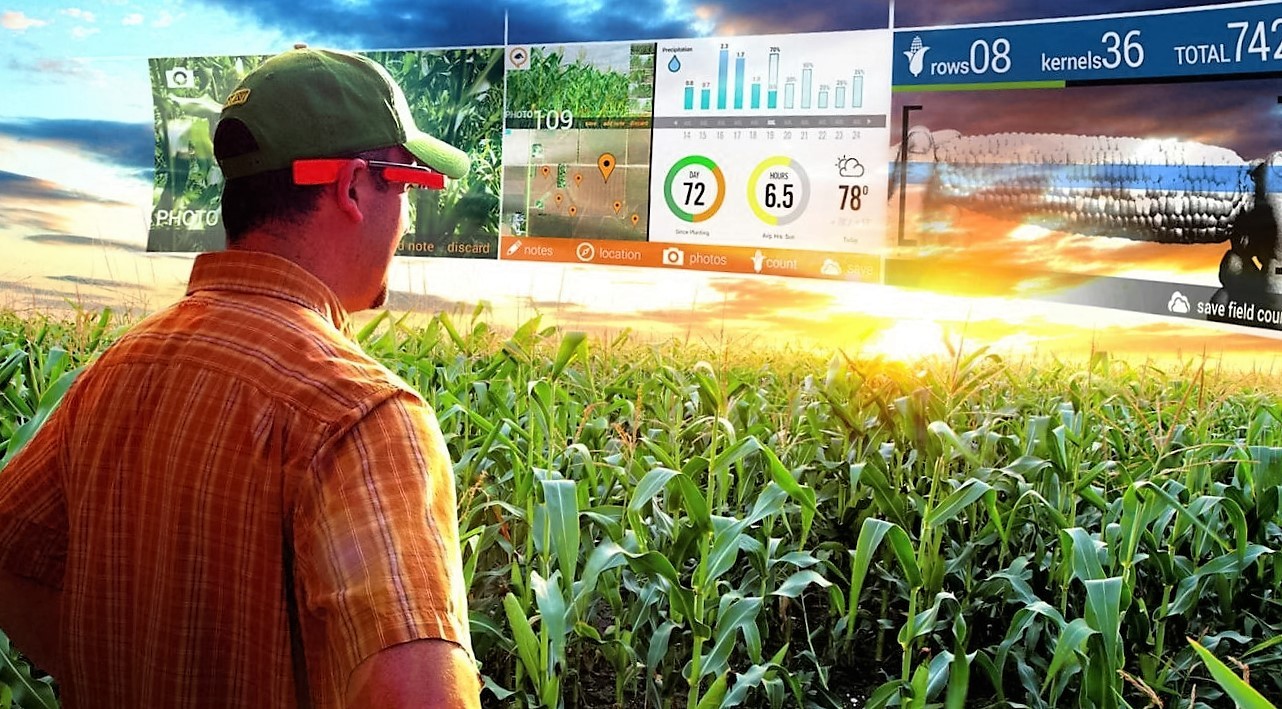Devavrat Kulkarni is a Senior Business Analyst at Maven Systems Pvt. Ltd. This article is a part of the smart cities initiative and innovations than could be the next-level advancements of internet Of Things based Smart-Agriculture
Why agriculture needs to improve?
Agriculture is one of the major industries in India. It employs around 50% of the workforce and along with fisheries and forestry contributes to 13% of the total GDP. India also is the 7th largest exporter of agricultural products in the world with exports being to the tune of USD 39 billion. However a nation with such a presence in the domain, lags behind when it comes to automation for the sector. With only 35% of farm land reliably irrigated and small sized farms being dominant, India’s efficiency of growing crops lags substantially when compared to nations like Brazil and China.
Problems faced include water logging, under and over use of fertilizers, and lack of understanding of soil health. There is also a dearth of accurate baseline data regarding different fields, and different soil types. This makes it impossible to understand how the yield of the land has either increased or decreased over the years.
What features to expect?
An IoT based agriculture centric solution should have a wide variety of features that will be relevant to the farmer. These features include:
Automated watering
Water retention in a given field depends on nature of soil and the temperature. The solution should consider these two parameters (and possibly more), and automatically operate the water pump to inundate the field.
New sensors are being developed that report various parameters of the soil including moisture, salinity, pH, and even residual nitrate level. Soil health will help to decide a wide variety of actions including how much fertilizer to use, which fertilizer to use, and what sort of crop to grow for maximum yield.
Proactive alerts
The solution will empower the farmer to understand the current condition of the field. Alerts will be sent to the mobile phone in case of watering, or when the need for more fertilizer arises.
The solution should update the data collected in the field to the internet. This baseline data will help to understand how parameters like fertilizer / pesticide brand, quality of the soil and the crops being grown have affected the production over the years. This will help the farmer to make informed decisions regarding what to grow in the coming seasons, to ensure not only highest yield per hectare, but to also maintain the health of the soil.
How the solution would work
The solution will employ multiple soil health sensors, a water pump, and a Data Concentrator Unit (DCU). The soil sensors will be used to collect various parameters of the soil and wirelessly transmit it to the DCU. Depending upon the inputs received, the DCU will take a decision to water the field. The DCU will then send a signal to the water pump to start the operation. Once the field is sufficiently watered, the DCU will send a signal to switch off the water pump.
The solution can also use a water level sensor to communicate with the DCU in case the water pump is going to raise water from a well. The water level sensor will also communicate with the DCU, and the DCU will have another parameter to take a decision of whether to water the field or not. Depending upon the inputs from the soil sensors the DCU can also send an alert to the farmer regarding which fertilizer to add and how much of it to add.

Advantages of an IoT based solution
Avoiding water logged fields
Water logged fields should usually be avoided because it causes crop damage, and increase in alkalinity of the soil. The solution will help avoid waterlogging by controlling the amount of water let into the field.
Understanding the effects of fertilizers and pesticides
Different pesticides and fertilizers have different effects on both the soil health and the yield. The solution will help understand the effects of various fertilizers, and help the farmer to choose one that gives maximum benefit from the point of view of both yield per hectare, and soil health.
Preventing emptying of water tank / well
As mentioned earlier, 35% of agricultural land in India is reliably irrigated. However it is important to make sure that the available water is used judiciously and effectively. Water tanks or wells shouldn’t be drained completely either on purpose or by accident. The solution will help avoid this issue by switching off the water pump when the water level drops below a certain threshold.
Making informed decisions for improved yield
The solution will log data about soil health, crop yield, fertilizer and pesticide, and water used over a number of years. All of this data will be analyzed to find patterns by the cloud application. As a result, the farmer will get an insight about how the various parameters need to be set in order to get the best possible yield from the land. This will include, which fertilizer to use, how much water to use, and which crops to prefer, and which to avoid.
Maintaining optimal soil health
As mentioned earlier, soil health is a huge factor when it comes to the yield obtained from the land. Soil health depends on a variety of factors like pH level, residual nitrate level, water retaining ability etc. using soil sensors, and storing the soil data on the Internet will help to have access to historic health and the current health of the soil. This will help to identify what steps to take to increase and maintain soil health at an optimum level.
Steps towards solving a complex problem
With the smart city initiatives being launched, there will be a definitive research & development in various sectors in the coming years. Agriculture is as yet an untapped market, but the size is such that it cannot be ignored anymore from a business perspective. It only serves to say that now with smart metering and smart lighting, smart agriculture is the next bastion to conquer.















I am working on the same project
Good to know that.